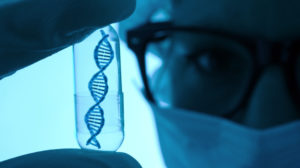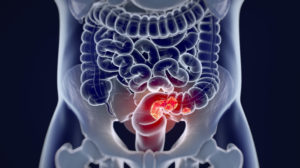Is there a difference between NAD+ vs. NADH? Keep reading to find out!
RELATED: Aerobic Glycolysis: How An Increased Demand For NAD+ Can Boost It
In this Article:
- What Is NAD?
- What Are NAD+ and NADH?
- NADH vs. NAD+: How Are They Different?
- How Do They Work Together?
- Why Is the NAD+ and NADH Ratio Important?
- How Can You Increase NAD+ Levels?
NAD+ vs. NADH: Everything You Need to Know
What Is NAD?
Some people use NAD, NAD+, and NADH interchangeably, but they aren’t the same. Before understanding the difference between NAD+ vs. NADH, you need to understand NAD.
NAD stands for nicotinamide adenine dinucleotide. It’s a coenzyme found in every cell, and it has two distinct forms: NAD+ and NADH.
To carry out different functions in the body, NAD can switch to either of its forms. So when NAD is used without the plus sign (+), it’s a general term that refers to both NAD+ and NADH.
What Are NAD+ and NADH?
The NAD+ and NADH are both molecules. They are both reduced and oxidized forms of NAD.
Scientists also call them a redox couple because they come from the same molecule and involve redox reactions. Redox reactions are chemical reactions that include changing the oxidation states of atoms by gaining or losing electrons.
Scientists will say that a molecule is reduced when it gains an electron. On the other hand, when a molecule loses electrons, scientists will say that they are oxidized.
NAD+ is the most stable form of NAD—essentially, it’s a charged NAD. Through a redox reaction, NAD+ can be converted to NADH.
In this process, a charged hydrogen molecule (H+) and two electrons are added to NAD+. When NAD+ transforms into NADH, it loses the plus sign because the H+ neutralizes the NAD+.
NADH can turn back into NAD+ when it reduces and gains an electron. So NAD can cycle back and forth from NAD+ and NADH.
RELATED: Obesogenic Diet Drives Epigenetic Predisposition To Metabolic Disorders
NADH vs. NAD+: How Are They Different?
NAD+ and NADH are similar but have different functions. The charged state of a molecule alone changes how it interacts with other molecules, so NAD+ and NADH have distinct roles in various biological activities.
NADH mainly functions as transportation for electrons during cellular respiration. NAD+, on the other hand, plays a vital role in various biological processes.
One of its primary functions is to activate sirtuins. Sirtuins are a family of proteins that are critical to cellular health and functioning.
It helps maintain cellular homeostasis and regulates cellular metabolism and energy production. Without NAD+, this protein family won’t be able to function well.
Unfortunately, NAD+ declines with age. So, at a certain point, the body can have a limited supply.
Initially, researchers believed that the decline of NAD+ contributes to aging and certain chronic illnesses. Now, researchers are interested in the effects of the NAD+ and NADH ratio on overall functioning.
RELATED: 5 Amazing NAD Supplement Benefits For Overall Health
How Do They Work Together?
Cells use NAD+ and NADH in various ways. For example, the liver uses it to break down ethanol.
Ethanol usually enters the body when people drink alcoholic beverages. To break down the ethanol, NAD+ will take its H+ to make NADH.
Another critical and interrelated function of NAD+ and NADH is the energy generation. The ratio of NAD+ and NADH informs how well cells can make adenosine triphosphate or ATP.
ATP is an organic compound that gives cells the energy they need to engage in various processes. During cellular respiration, when NAD+ transforms into NADH, ATP is created.
There are three phases the body goes through to produce ATP from food:
- Glycolysis – This phase converts glucose from food into pyruvate and hydrogen. So in this phase, NAD+ transforms into NADH.
- Krebs cycle – This phase breaks down glucose and other molecules into carbon dioxide or water. The breakdown releases ATP. In this phase, NAD+ transforms into NADH.
- Electron transport chain – In this phase, NADH breaks down into NAD+, H+, and a few electrons. The cell’s mitochondria use the H+ to create ATP.
Among the three phases, the electron transport chain creates the most ATP.
Why Is the NAD+ and NADH Ratio Important?
Researchers believe that low NAD+ and NADH ratios may have an impact on different biological processes. While they may be distinct forms of NAD, their functions are intertwined.
So when the ratio is lopsided, it may impact how well they function. The body’s needs for NAD+ and NADH may have an impact on their ratio.
For instance, chronic alcohol drinkers may have more NAHD in their system. The body will need to use more NAD+ to break down the ethanol and, in turn, create more NADH.
On top of that, when sirtuins use NAD+, they don’t transform it into NADH. Instead, they use it to form nicotinamide.
At this point, scientists still don’t know the optimal NAD+ and NADH ratio. NAD+ and NADH levels can vary in different parts of the cell.
In animal studies, scientists have found that the same ratios can function differently in different parts of the cell. They also found that ratio depletion in one part of the cell doesn’t always impact other parts of the cell (including the mitochondria).
Most scientists are in agreement, though that increasing the NAD+ and NADH ratio will allow cells to create more energy. Interestingly, while many studies show that NAD+ declines with age, a new study shows that NADH may increase as you age.
When NAD+ decreases, but NADH increases, the ratio declines and becomes more lopsided. So, while it’s clear that both NAD+ and NADH work together to maintain cellular function, there are still many aspects of NAD regulation that aren’t clear.
How Can You Increase NAD+ Levels?
While the underlying cellular mechanisms aren’t clear, scientists are trying to address the NAD+ decline that comes with age. Researchers identified a precursor vitamin, nicotinamide riboside, that can help increase NAD+.
After administering it as a supplement to healthy adults for eight weeks, the researchers found a significant increase in NAD+ levels. Depending on the dosage, NAD+ levels increased between 40-90%.
If you’re interested in learning more about NAD+ supplements and what it can do for your overall health, visit the TruDiagnositc website.
What are your thoughts on NAD+ supplements? Share them with us in the comments section below.
Up Next:





